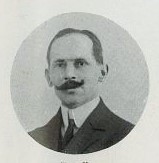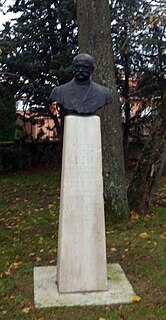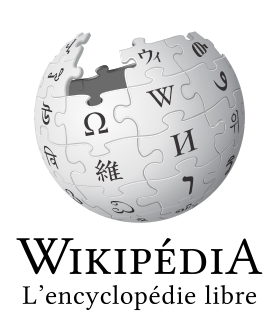
Jean-Pierre Morat (18 April 1846 – 25 July 1920) was a French physiologist born in Saint-Sorlin, department Saône-et-Loire.

Saône-et-Loire is a French department, named after the Saône and the Loire rivers between which it lies.
He studied medicine at École de médecine de Lyon, traveling to Paris in 1873, where he presented his dissertation-thesis on bone marrow, "Contributions à l’étude de la moelle osseuse". He remained in Paris for three years, working in the laboratory of Claude Bernard (1813–1878), of whom, Morat became a devoted disciple. In Paris, he worked closely with veterinarian Henri Toussaint (1847–1890) and physiologist Albert Dastre (1844–1917). With Toussaint, he collaborated on "Les variations de l’état électrique des muscles" (Variations of the electrical state of muscles), and with Dastre, he undertook extensive research of the sympathetic nervous system. With Dastre, the "Dastre-Morat Law" is derived, a dictum which states that "the vasoconstriction of the capillaries of the body surface is usually accompanied by vasodilation of the internal vessels, especially of the viscera, and vice-versa".

Lyon is the third-largest city and second-largest urban area of France. It is located in the country's east-central part at the confluence of the rivers Rhône and Saône, about 470 km (292 mi) south from Paris, 320 km (199 mi) north from Marseille and 56 km (35 mi) northeast from Saint-Étienne. Inhabitants of the city are called Lyonnais.

Paris is the capital and most populous city of France, with an area of 105 square kilometres and an official estimated population of 2,140,526 residents as of 1 January 2019. Since the 17th century, Paris has been one of Europe's major centres of finance, diplomacy, commerce, fashion, science, and the arts.
Bone marrow is a semi-solid tissue which may be found within the spongy or cancellous portions of bones. In birds and mammals, bone marrow is the primary site of new blood cell production or hematopoiesis. It is composed of hematopoietic cells, marrow adipose tissue, and supportive stromal cells. In adult humans, bone marrow is primarily located in the ribs, vertebrae, sternum, and bones of the pelvis. On average, bone marrow constitutes 4% of the total body mass of humans; in an adult having 65 kilograms of mass, bone marrow typically accounts for approximately 2.6 kilograms (5.7 lb).
Following his years spent in Paris, he became an instructor of physiology at the faculty of medicine in Lille. In 1882 he was appointed professor of physiology at the faculty of medicine in Lyon, a position he maintained until his retirement in 1916. In 1883 he was admitted to the Société de biologie, and in 1904 was elected as a correspondent to the Académie de Médecine. In 1916 he became a correspondent of the Académie des sciences.

The University of Lille is a French pluridisciplinary public university located in and around Lille, Hauts-de-France. It has its origins in the University of Douai (1559), and resulted from the merger in 2018 of the three universities Lille 1 University of Science and Technology, Lille 2 University of Health and Law, and Lille 3 Charles de Gaulle University of humanities, social sciences, literature and arts. With more than 67,000 students, it is the largest French university and one of the largest French-speaking universities in the world.

The University of Lyon, located in Lyon and Saint-Étienne, France, is a center for higher education and research comprising 16 institutions of higher education. The three main universities in this center are: Claude Bernard University Lyon 1, which focuses upon health and science studies and has approximately 27,000 students; Lumière University Lyon 2, which focuses upon the social sciences and has about 30,000 students; Jean Moulin University Lyon 3, which focuses upon the law and humanities with about 20,000 students.
The Société de biologie is a learned society founded in Paris in 1848. The society was conceived during the French Revolution of 1848. The members of the society held regular meetings and published the proceedings in a new scientific journal. The founding members of the society included Claude Bernard, the naturalist Charles-Philippe Robin, and the surgeon Eugène Follin. Its first president was the doctor and dermatologist Pierre Rayer.
Morat had a keen interest in the field of surgery, being credited for introducing a process of administering morphine and atropine to a patient prior to the administration of anesthesia. Among his better known writings was the six volume "Traité de physiologie" (1904), a work that was co-written with a former student of his, Maurice Doyon (1869–1934).

Surgery is a medical specialty that uses operative manual and instrumental techniques on a patient to investigate or treat a pathological condition such as a disease or injury, to help improve bodily function or appearance or to repair unwanted ruptured areas.

Morphine is a pain medication of the opiate family which is found naturally in a number of plants and animals. It acts directly on the central nervous system (CNS) to decrease the feeling of pain. It can be taken for both acute pain and chronic pain. It is frequently used for pain from myocardial infarction and during labor. It can be given by mouth, by injection into a muscle, by injection under the skin, intravenously, injection into the space around the spinal cord, or rectally. Maximum effect is reached after about 20 minutes when given intravenously and after 60 minutes when given by mouth, while duration of effect is 3–7 hours. Long-acting formulations also exist.

Atropine is a medication used to treat certain types of nerve agent and pesticide poisonings as well as some types of slow heart rate and to decrease saliva production during surgery. It is typically given intravenously or by injection into a muscle. Eye drops are also available which are used to treat uveitis and early amblyopia. The intravenous solution usually begins working within a minute and lasts half an hour to an hour. Large doses may be required to treat some poisonings.














